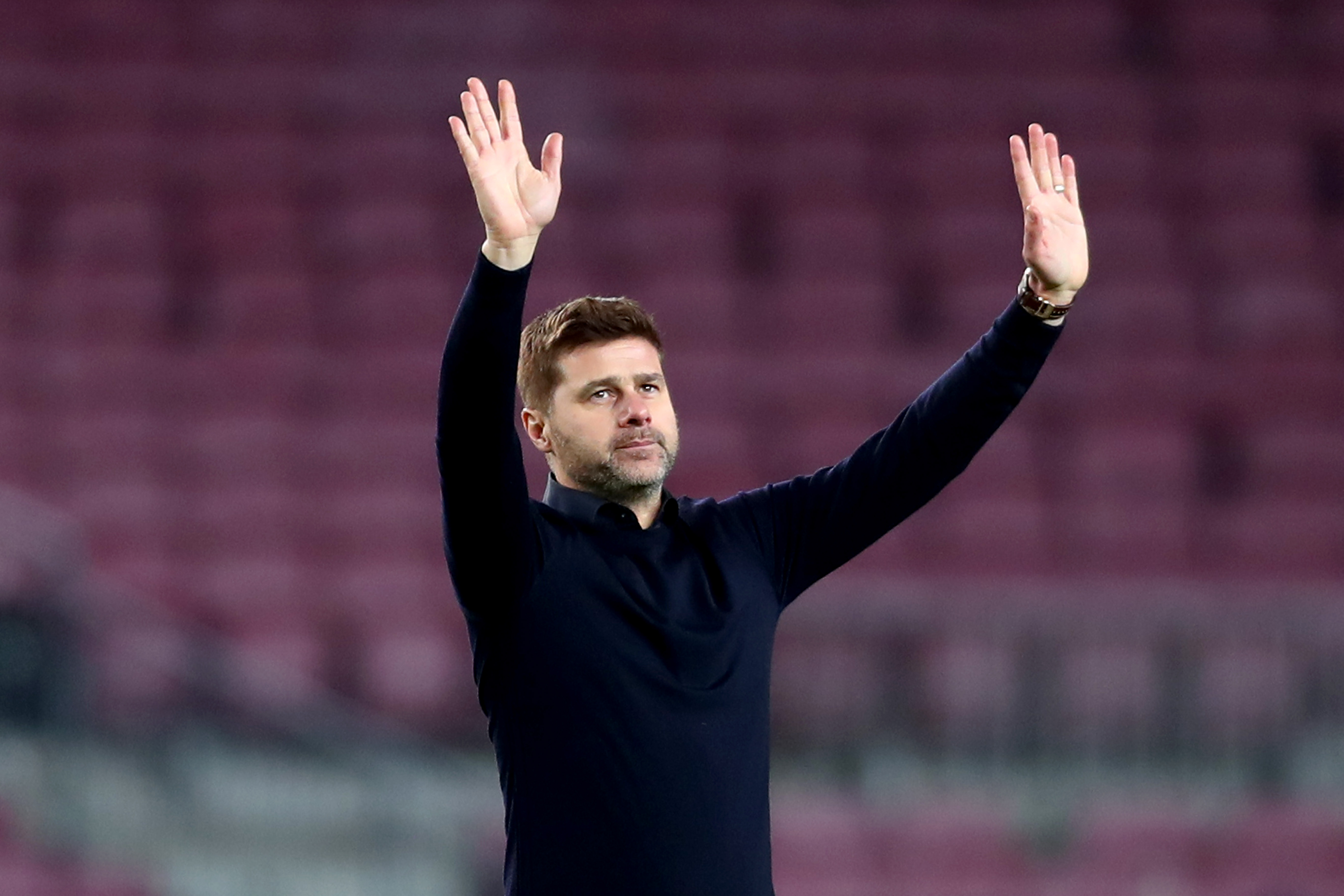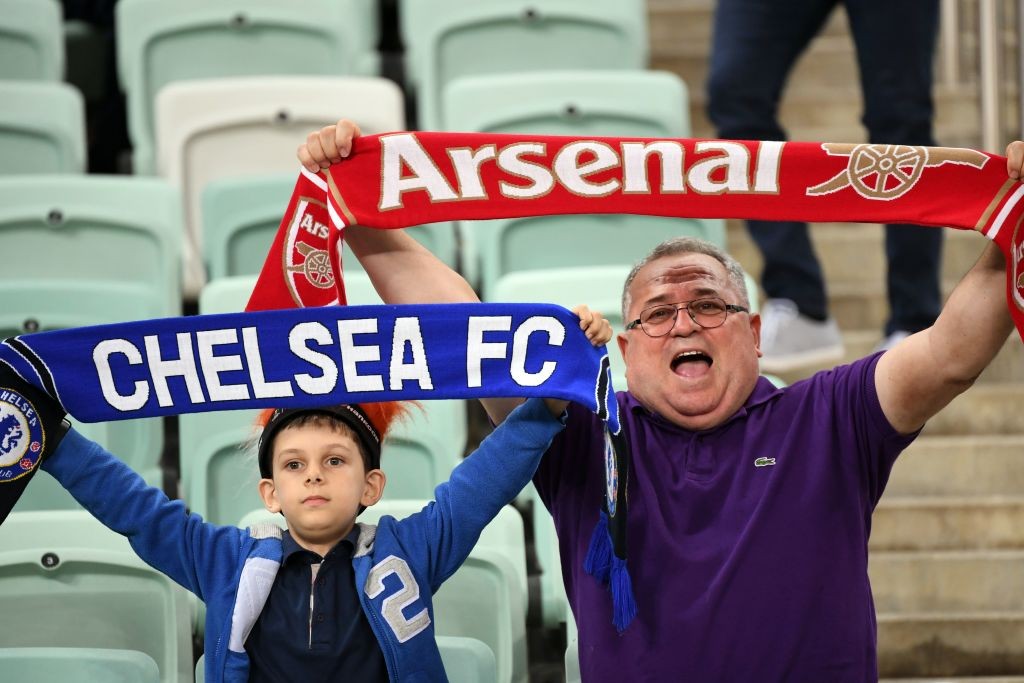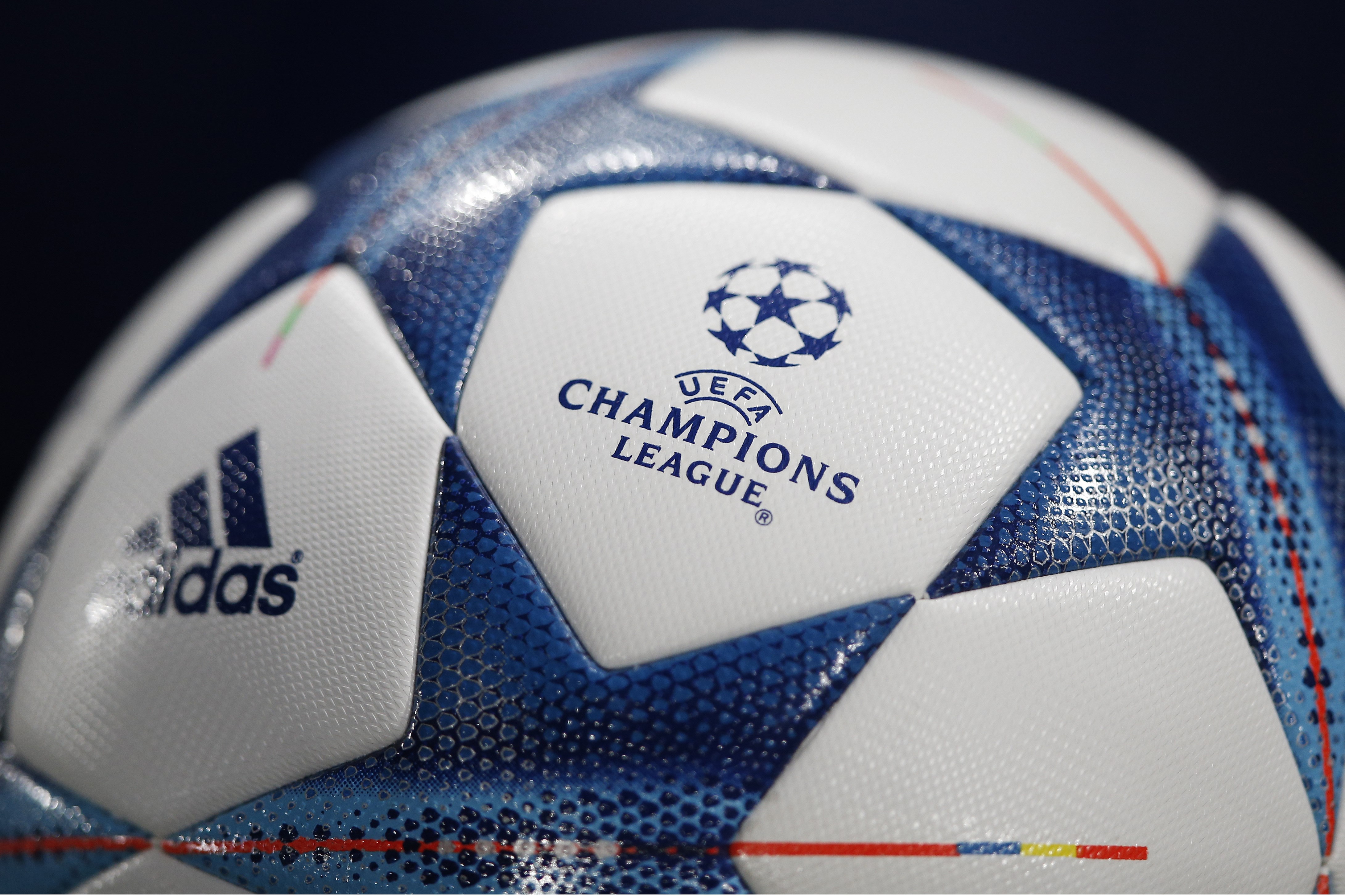Italy managed to come out of the group stage with flying colours despite the fact that they had to face some of the most difficult oppositions in the competition. Italian head coach and incoming Chelsea manager Antonio Conte has shown yet again how meticulous planning can triumph over individual brilliance.
Going into the tournament, Italy were not really expected to go very far, having failed to impress in recent international matches. They struggled to beat Scotland (1-0) and Finland (2-0), and were trounced 4-1 by the mighty Germans. If these results were any indication, Italy were all set to struggle against Belgium, the highest ranked side in Europe.
However, the Azzurri came out of their group with flying colours and finished as Group E toppers. While recent results will give a lot of hope to the Italian supporters, future Chelsea manager Conte’s men are in for a number of difficult matches. As the Italians progress to the knockout rounds, we try to fathom the complicated tactical system that the former Juventus boss has been deploying, and how far it can take them.
Italy’s own BBC
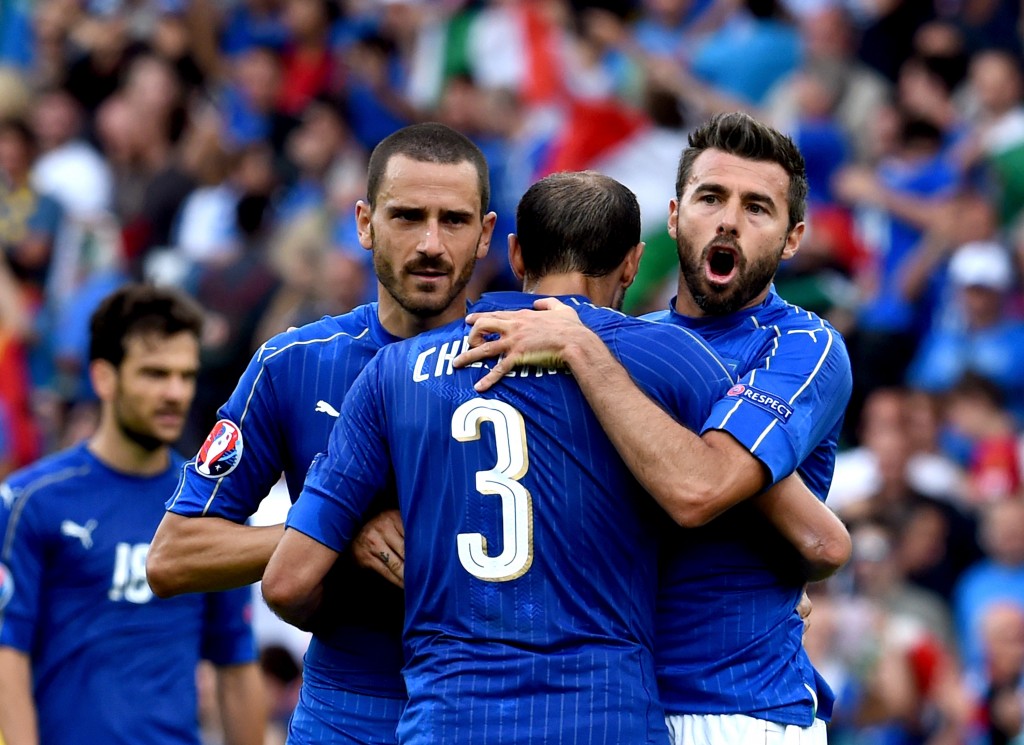
The Azzurri might lack big names further down the pitch, but when it comes to the defence, they arguably have three of the biggest names in the world, at the moment — Andrea Barzagli, Leonardo Bonucci, and Georgio Chiellini. Add a certain 38-year-old wise-head named Gianluigi Buffon in goal, and any attacker would be quaking at the prospect of facing such a defence.
The three-man defence is key to the way Italy play their football. Using three defenders allows them to put more men in the middle of the park, and choke out the opposition attacks with their brilliant pressing game. Interestingly though, they shift from the 3-5-2 formation to the 4-4-2 while defending, with Matteo Darmian dropping into left back, Chiellini and Bonucci operating as centrebacks, and Barzagli pushing out to a right back position.
This tactic worked wonders against Belgium, as Barzagli managed to keep Chelsea star Eden Hazard quiet in the Azzurri’s surprise 2-0 win over the Red Devils. However, this tactic has an obvious disadvantage, one that the Belgians failed to capitalise on.
Hazard was often left to deal with Barzagli alone, and had to play the ball back into midfield. This mainly occurred because Belgium do not have a natural fullback. Jan Vertonghen (who was playing at left back) is more of a centre-back, and thus failed to give Hazard the adequate support on the flanks.
Spain, who the Italians have to face in the round of 16, are a side that have natural width, as they have good fullbacks like Jordi Alba and Juanfran. These two La Liga stars will be looking to stretch the Italian defence as much as possible, in order to break them down. The likes of Barzagli and Darmian could face some difficulty against the Spanish full-backs.
Midfield and forwards working in tandem
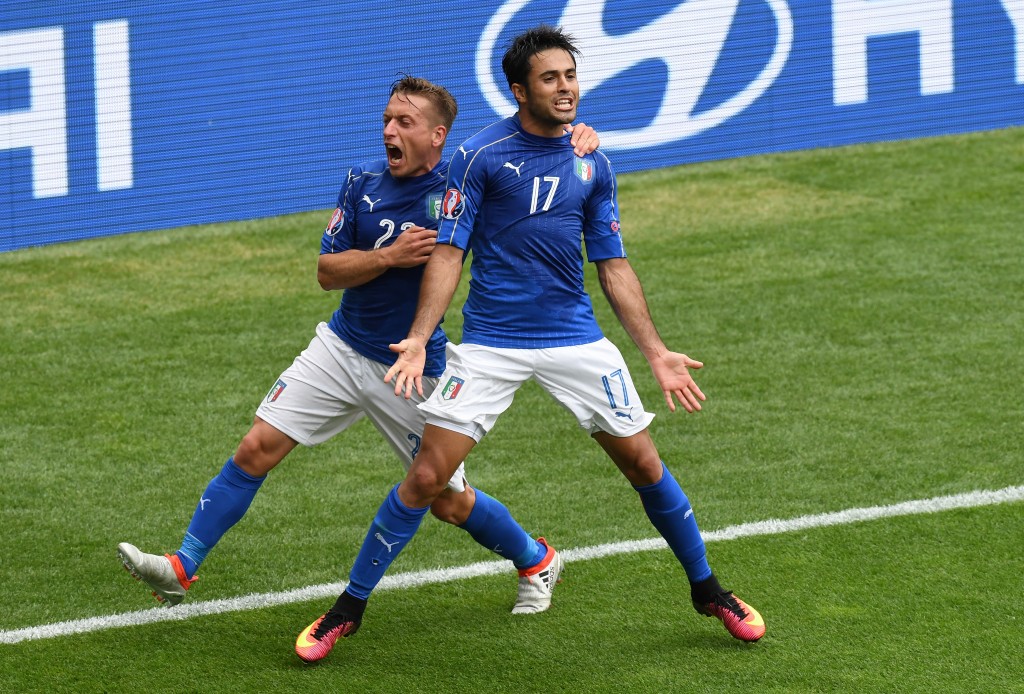
Prior to the tournament, there was a lot of concern surrounding Italy’s midfield, as Conte had to leave Marco Verratti and Claudio Marchisio, his most creative players, out of the squad due to injuries. With the duo in the side, Conte would make Verratti sit at the top of the Midfield pyramid, with Marchisio and Daniele De Rossi operating in deeper roles.
In the absence of both Verratti and Marchisio, Conte decided to completely overhaul his system. He deployed the likes of Emanuele Giaccherini and Marco Parolo in midfiled, with De Rossi playing as the only holding player. While De Rossi sat back to nip opposition attacks in the bud, the Bologna and Lazio men operated as box-to-box midfielders.
To put pressure on the opposition defenders, they pushed forward when Italy had the ball. This is where Bonucci’s role became ever so important for Conte’s side. Over the last couple of years, Bonucci’s supreme passing ability has become apparent to the rest of the footballing world. In the absence of a clear-cut playmaker, it is Bonucci, who plays the ball out of defence, and feeds the attacking players.
Since Italy play two strikers (Eder and Graziano Pelle), one of the two forwards tend drop to back a little, drawing one of the defenders with him. This allows the likes of Giaccherini, and Parolo to bomb forward, and exploit the vacated space.
This ploy is evident from Italy’s first goal against Belgium. Giaccherini made a brilliant run, and produced an equally brilliant finish to score this goal. However, as is evident from the video above, the goal was actually created by Eder’s movement, and Bonucci’s brilliant aerial through ball.
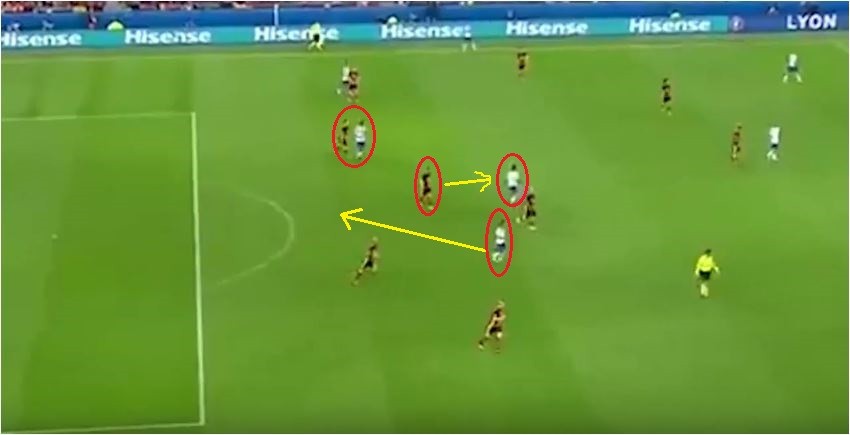
As illustrated in the graphic above, Eder draws Vermaelen out of his defensive line as soon as De Rossi plays the ball back. Unlike most other teams, Italy play the ball back with a very specific purpose in mind — to play the aerial through ball. Eder’s backward movement draws Vermaelen out just a little, and that is enough for Giaccherini to make the darting run and latch on to Bonucci’s through-ball.
Daniele De Rossi: The weakest link in an otherwise strong lineup
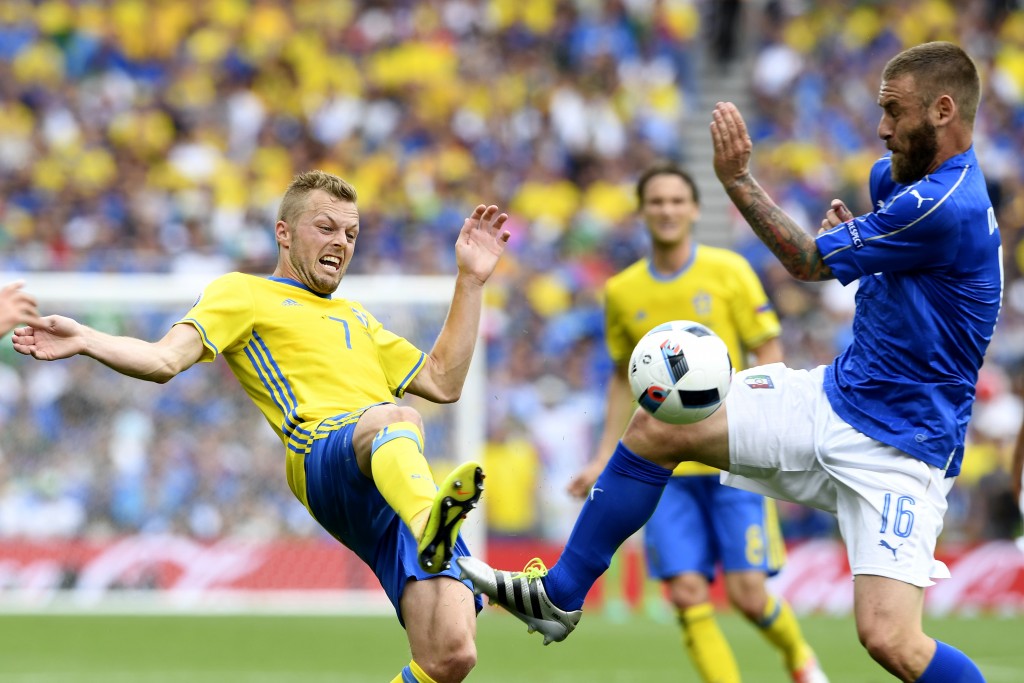
Under normal circumstance, Daniele De Rossi would not be considered as a weak link. However, the AS Roma midfielder is having to operate in an improvised midfield, where he is the sole holding player. Defensively, not much can be said against the 32-year-old.
However, De Rossi can be the weak link, if the Italians are allowed to keep possession of the ball. The Roma man was exposed in the match against Sweden, as he was left to man the midfield alone, while Giaccherini and Parolo bombed forward in attack.
Sweden head coach Erik Hamren was mindful of Italy’s two box-to-box midfielders, and set about to utilise the space they left behind in the middle of the park, to isolate De Rossi. What Hamren did, was to surround De Rossi with three or four players, as illustrated in the screenshot below.
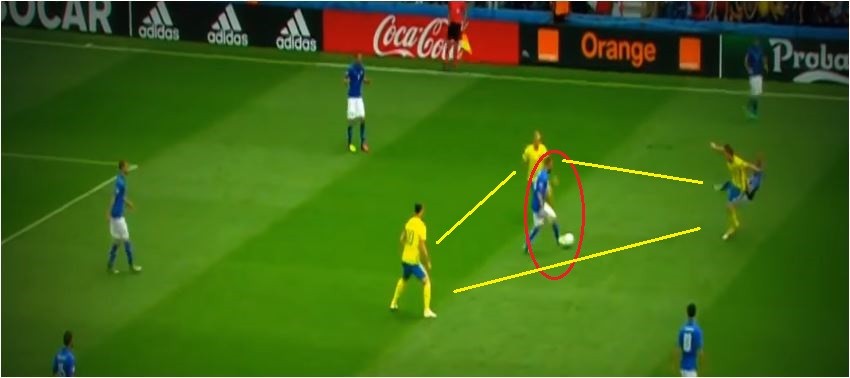
In fact, the Swedes employed this trap even when the ball was at the feet of one of the three Italian defenders. This essentially cut the midfield off, and Italy were reduced to just playing long balls out of defence. De Rossi is not known for his technical abilities on the ball, which means that the opponents could snatch the ball from him in dangerous areas.
However, Italy have been handed a rather difficult draw from the knockout stage, where they are set to face Spain. If they do make it through to the quarter finals, they are likely to face Germany, with a potential match against hosts France, or England in the semi-finals (if they defeat the Germans).
All these teams play an attacking brand of football, and are unlikely to let Italy have possession of the ball. This could turn out to be a blessing in disguise for Conte’s men, as the weakest link in their lineup will not be exposed, if their opponents hog all the possession.
Read More: EURO 2016 – 30 BEST YOUNG PLAYERS WHO COULD SHINE

